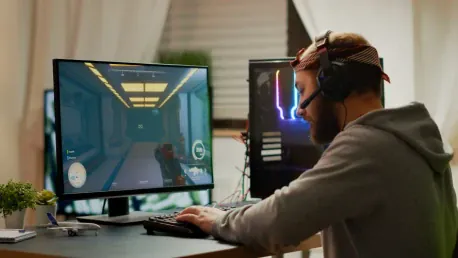The introduction of Microsoft’s Muse AI tool, designed to revolutionize game development, has stirred significant debate among industry professionals. Muse can generate entire gameplay sequences based on images, clips, and player input, marking a considerable advancement in AI technology for game development. As an open-source model, Muse aims to maintain consistency across frames and effectively integrate player input. Trained on over a million updates, Muse can predict up to half a minute of gameplay from just one second of footage and nine seconds of player input. This tool retains intricate details, such as terrain, characters, and game mechanics, even when they move out of the visible frame, promising a groundbreaking shift in how games are created and developed.
Potential Benefits and Use Cases
One of the most lauded features of Muse is its ability to aid rapid prototyping and concept creation. Microsoft proponents, including Xbox head Phil Spencer and Ninja Theory’s Dom Matthews, view Muse as a valuable tool for quickly drafting and iterating ideas rather than producing final content. This rapid iteration allows developers to explore various gameplay mechanics and narrative scenarios without the time-consuming process typically associated with traditional game development. For instance, the tool can significantly reduce the gap between conceptualization and playable versions, enabling developers to test and refine their ideas more efficiently. By facilitating this iterative process, Muse allows for more creative freedom and experimentation during the early stages of game design.
Another promising application of Muse is its potential role in preserving and porting older titles to modern devices. Spencer speculated that Muse could assist in the preservation of iconic games, ensuring they remain playable on contemporary platforms. This capability could revitalize classic games, making them accessible to new generations of gamers without losing the essence that made them iconic in the first place. By leveraging AI to replicate and adapt older titles, the gaming industry could preserve its history while embracing the future of technology. However, the challenge lies in maintaining the original charm and gameplay experience while integrating new technological advancements, a balance that Muse aims to achieve.
Concerns and Ethical Considerations
Despite its promising features, Muse has sparked concerns about the potential loss of hands-on development experience among game designers. Developers like David Goldfarb and Marc Burrage have voiced worries that even limited use of generative AI might undermine the valuable skills honed through traditional game development processes. The integration of AI in game design could lead to a dependence on automated solutions, potentially diminishing the artistry and craftsmanship involved in creating games. While Muse offers efficiency and speed, it might also reduce the opportunities for developers to engage in the intricate, hands-on work that defines the game development profession. This could lead to a shift in the industry’s skill set, prioritizing AI proficiency over traditional design expertise.
Moreover, ethical concerns have been raised regarding Muse’s training data. The controversy often associated with AI revolves around the unauthorized use of online materials. However, Microsoft has skirted this issue by using data from games it owns. For the initial training of Muse, player telemetry data from Ninja Theory’s Bleeding Edge was used, with users consenting to this under the game’s end-user license agreement (EULA). This practice may extend to other titles within Microsoft’s portfolio, but it raises questions about the boundaries of consent and the ethical use of data. While the approach mitigates some ethical concerns, it underscores the need for transparency and responsible AI practices in the gaming industry.
Divided Opinions on the Future
The release of Microsoft’s Muse AI tool, aimed at transforming game development, has sparked much discussion among industry experts. Muse is capable of generating complete gameplay sequences from images, clips, and player input, representing a significant leap forward in AI technology for the gaming sector. As an open-source model, Muse seeks to ensure frame-to-frame consistency while effectively incorporating player input. Having been trained on over a million updates, Muse can predict up to thirty seconds of gameplay from only one second of footage and nine seconds of player input. Impressively, this tool retains detailed elements such as terrain, characters, and game mechanics even when they shift out of the visible frame, heralding a monumental shift in the methods used to create and develop games. This development promises a groundbreaking change in the gaming industry, potentially simplifying and accelerating the game design process while enhancing creative possibilities for developers.









